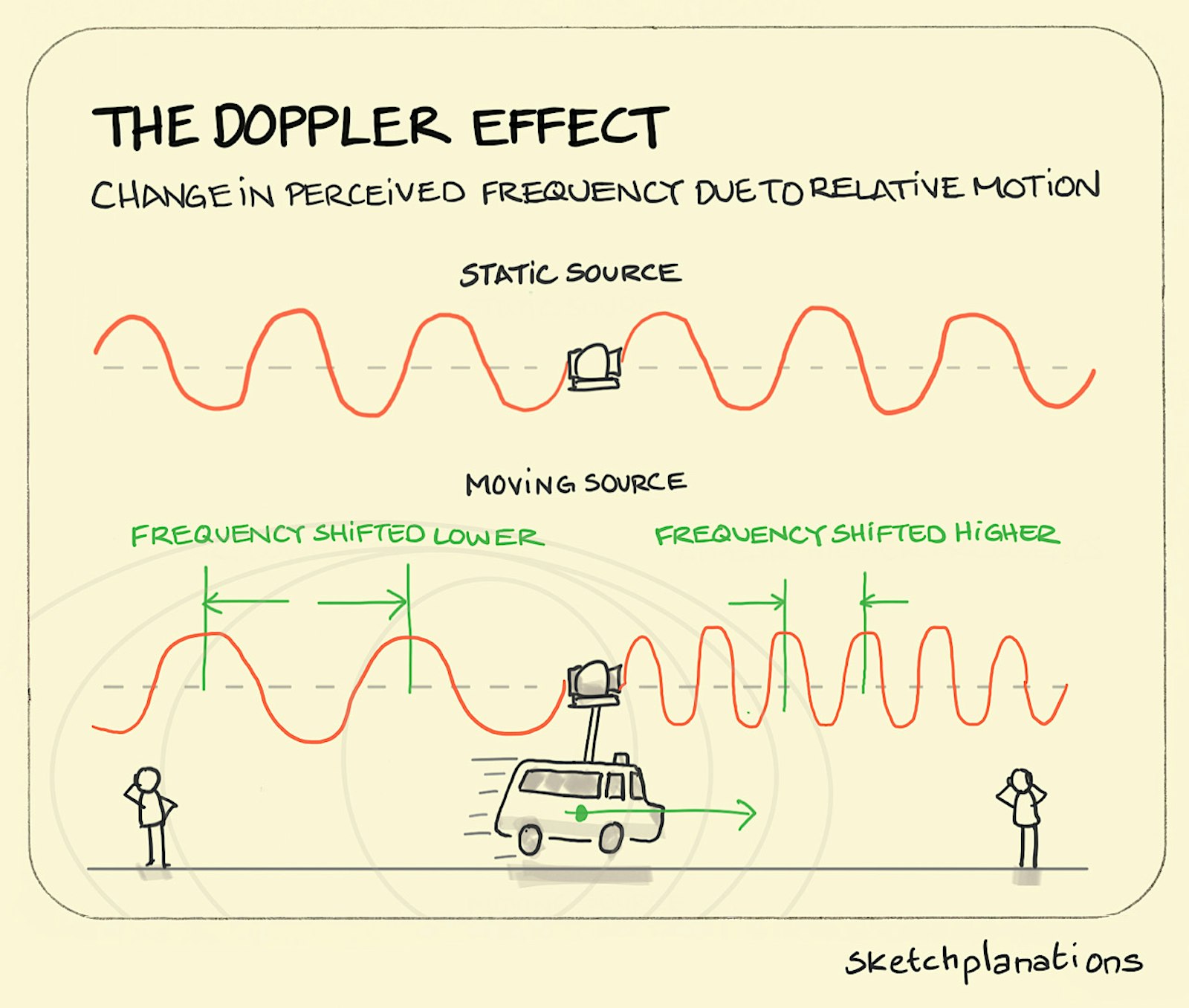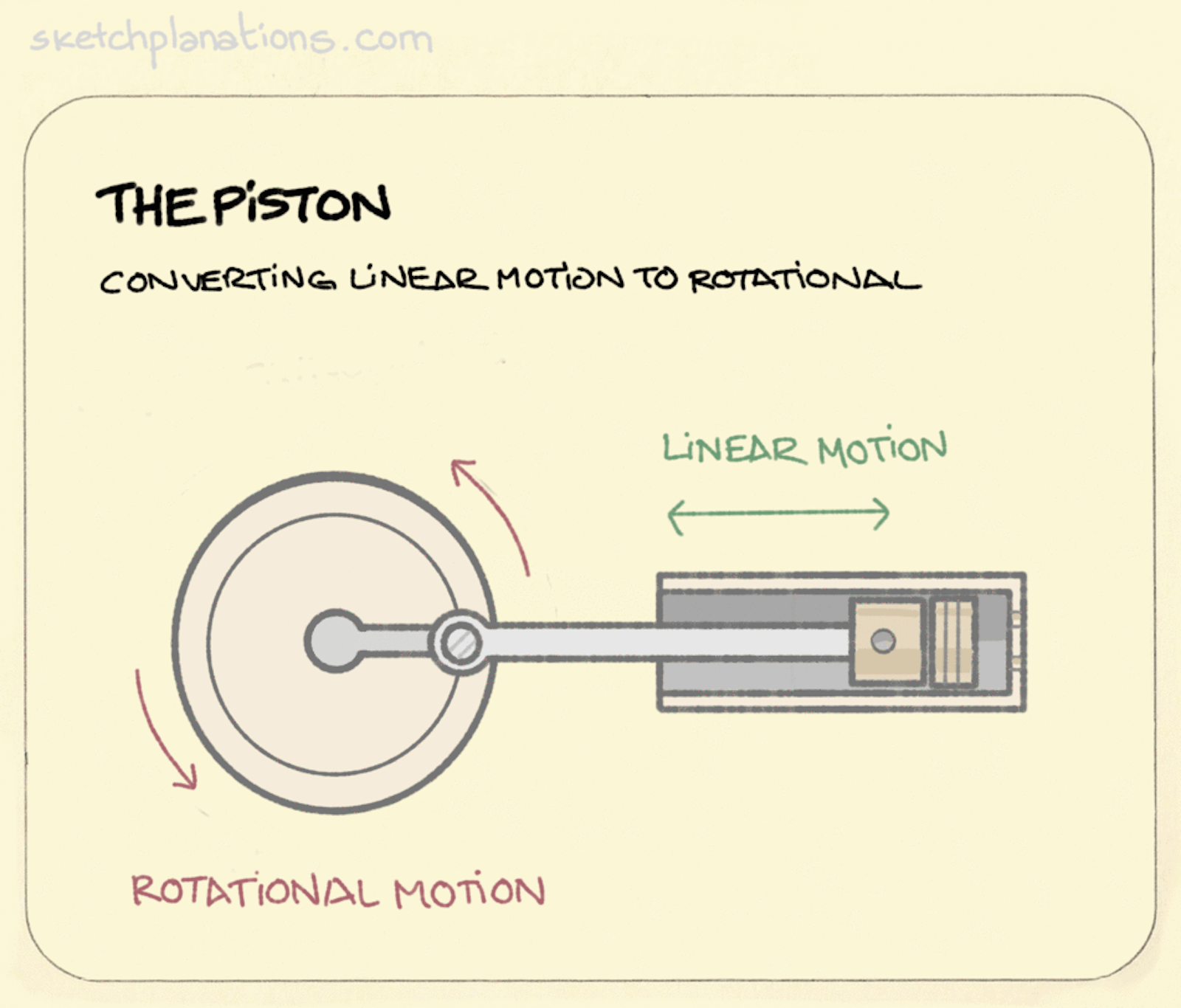
The Doppler Effect
The Doppler effect is the change in frequency of a wave as its source moves relative to the observer.
The same effect that causes a siren's pitch to change as it drives past is also used to estimate blood flow with ultrasound, measure the speed of a passing car, and even determine the motion of the stars. Doppler shift-based satellite navigation was also the first operational use of a system that eventually led to GPS.
When a siren or similar sounds approach, I try to imagine the crunching of the sound waves—the vehicle seemingly chasing after its own sound—and the stretching out of the waves as it heads past and into the distance. At least it makes it less painful on the ears.
Here's an excerpt from my Dad's book, Einstein's Mirror, in a fascinating chapter discussing the speed of light:
"In 1845 in Utrecht, a troupe of trumpeters played their instruments while being transported by a train. Another group of musicians arrayed alongside the railway track were paid to listen carefully as the train and the trumpeters went by. This seemingly bizarre experiment was the invention of the Austrian physicist Johann Christian Doppler. Most readers will have noticed the drop in pitch of a whistle as a train goes by, or of a siren as an ambulance or police car passes. It was precisely this same change in pitch with motion that Doppler was investigating with his entertaining train and trumpet experiment."
A polished version of this sketch appears in my book Big Ideas Little Pictures




